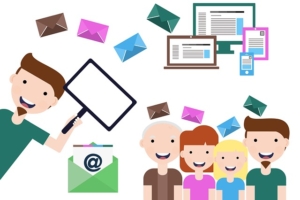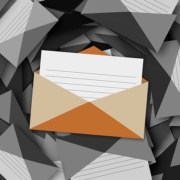3 ideas to instantly improve your email impact
Let’s face it – business email isn’t sexy. For most of us, it probably isn’t something we look forward to on a Monday morning and for some, it eats away far too many office hours! Hands up if you’ve ever hit that “send” button just after realizing you’ve made a mistake or perhaps received emails without a clear message, a challenge to read or after reading someone else’s irritating email – their business cred goes straight out of the window?
Fear not! Below are a few email tips taken from my Writing for Social Customer Service training to get you thinking more about how others perceive us through our email, and effectively will help you improve your email writing routine and shine a little more online.
Table of Contents
Keep it compact – smartphone friendly!
Long emails take time to write and equally they take time to read. Keeping your emails short, clear and concise will help your reader save time and probably get your emails responded to quicker.
Remember, almost 70% of all email interaction is initially opened on a mobile device so this means your reader probably doesn’t have time to read your magnificent novel blockbuster on-the-go as it has more chance of being slung into the read-later box or even worse – never to be read at all.
Aim for short, snappy paragraphs with lots of white spaces between them. Try to avoid lots of text in large paragraphs as scrolling through on your smartphone usually doesn’t go down to well. How long should it be? Well, I would suggest up to 140 words works well.
To put it into perspective, that’s about a third of text from this article you’re reading.

Get straight to the nitty-gritty – cut the small talk!
Instead of starting off with a few pleasantries then building the introduction to your message with a story that supports your reason for writing and finally popping the point of the email at the bottom somewhere – throw it in at the beginning!
Kick off with a gentle pleasantry then straight into the reason for writing. If not, you’ll lead your reader through the text without letting them know what the message is about. This may result in them losing interest or simply not wishing to sift through your flowery words because you want something from them.
Just like an article headline – you need to capture the reader from the top of the page by telling them what the email is clearly about. A request, passing on information, asking for advice or complaining – whatever the reason for writing, be up front with your reader from the word “go”.
The Key Ingredient: The Subject Line
We sit down at the desk, open our inbox and boom! A long list of random messages and if you’re like me, the first thing you do is target the emails that get deleted just by reading the subject line – even before you’ve opened them!
The Subject line is the key ingredient to getting your email read.
Try limiting the number of words to 10 as this is easier to scan. Insert a function word at the start so it’s clear what you’ll find inside the email; (REQUEST) (ADVICE NEEDED) or perhaps (PLEASE CONFIRM) – something that tells us the reason for writing.
I often put my name at the end in brackets (Peter Hopwood) as this ensures they know who the email was written by. Surprisingly, sometimes the sender’s name won’t always appear in the “from” section even if it’s company email.
By putting a short code or a few words which connect the email to project or issuehelps the reader find this particular cluster of emails at a later stage. For example; (London Presentation NOV 14) or (Email Tips) – a way ofinserting keywords into your subject line.
These are just 3 tips which will help you think more about your email writing and hopefully move you in the right direction to become a stronger communicator online.
About the author: Peter Hopwood

Peter Hopwood is a copywriter, workplace communications trainer and founder of Libris communications based in Eastern Europe. He focuses on helping professionals to make a stronger impact with their personal communication via customer service training, copywriting, public speaking and presentation skills.



